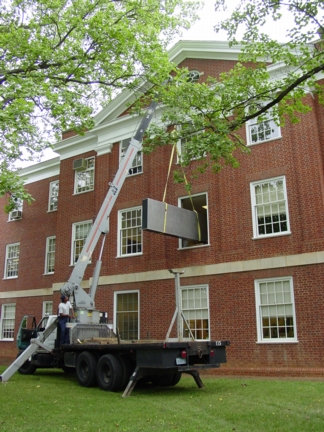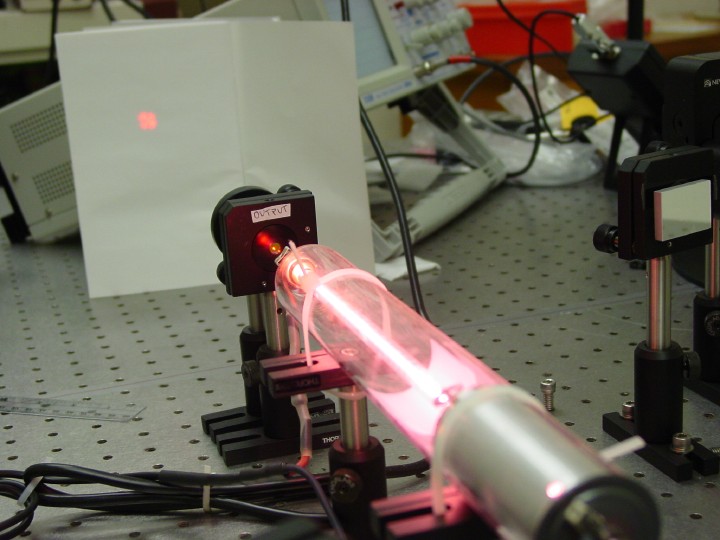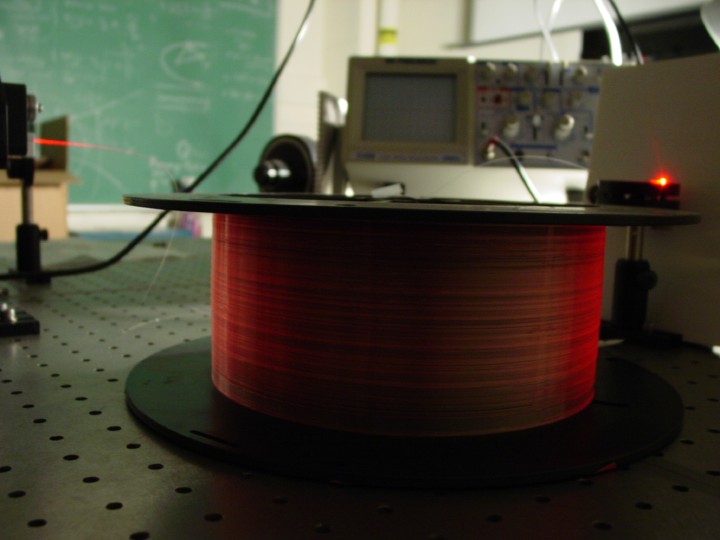
Development of the Optical Physics and Photonics Teaching Laboratories
The new Optical Physics and Photonics concentration in the Physics undergraduate curriculum at the University of Virginia aims at teaching fundamentals of technologically active fields, such as laser physics and photonics, which is an imperative for a university that prepares its students to understand the world in which they live and will work. This need is also reflected in the recent recommendation by the National Academy of Sciences that the research techniques developed in atomic, molecular, and optical physics be transferred to undergraduate education.
The concentration comprises two lecture courses (one new), two new laboratory courses, and one independent study. The goal is to provide students with theoretical and practical knowledge of the fundamentals of optics and photonics, so as to empower those who will seek employment in industry and research after graduating. Support is requested to help implement the laboratory courses, with the use of modern equipment and techniques central to the aims of the project.
The project is envisioned to play several roles in the broader context of the University and the State of Virginia. Besides the direct benefit to students, it is hoped to attract new students to the Physics department and to the sciences in general. Another central role is to provide support for the NSF Integrative Graduate Education and Research Training (IGERT) program, Science and Engineering of Laser Interactions with Matter (SELIM), which is jointly administered through the Chemistry and Physics Departments and has a participation level of about 10 graduate students per year in Physics, Chemistry and Engineering.
Contact person: Olivier Pfister, Physics Department
Laboratory development
Experiment list:
Physics 533 Optics Lab: Ray optics, Aberrations, Hanbury Brown and Twiss experiment, Diffraction gratings and spectrometry, Coherence and interferometers, Fresnel and Fraunhofer Diffraction, Crystal optics and polarization interference.
Physics 534 Photonics Lab: Introduction to Lasers, Laser Beams, Diode Lasers, Saturated absorption spectroscopy, Laser coherence measurement, Electro-optic Modulation, Second Harmonic Generation.

Installation of a 12' long optical table in the new optics teaching laboratory of the Physics Department.

Introduction to Lasers: Assembly and characterization of the properties of the Helium-Neon laser (the electrode caches have been removed for the photo). Mirrors on either side of the glowing plasma tube constitute the laser's optical resonator.

Laser Beams: Observation of a transverse Gaussian laser mode, (here TEM11) emitted by the laser at 633 nm. These transverse spatial patterns are described by Hermite polynomials and can be changed by adjusting the angles of the laser cavity mirrors.

Laser coherence measurement: A 500m spool of silica optical fiber glows as it carries light at 633 nm. the launch mount can be seen on the left with fiber cladding losses. The fiber output creates the bright spot on the right. The glowing comes from the residual absorption losses of the fiber, as we are well away from the loss-minimum wavelength of 1550 nm that is used in optical telecom. The fiber here is used as an optical delay line (longer than the laser's coherence length) in an autocorrelation inteferometry experiment intended to measure the laser's emission spectrum.